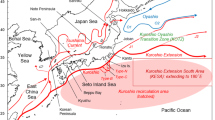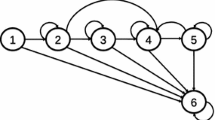Abstract
What to do about fisheries collapse and the decline of large fishes in marine ecosystems is a critical debate on a global scale. To address one aspect of this debate, a major fisheries management action, the removal of gill nets in 1994 from the nearshore arena in the Southern California Bight (34°26′30″N, 120°27′09″W to 33°32′03″N, 117°07′28″W) was analyzed. First, the impetus for the gill net ban was the crash of the commercial fishery for white seabass (Atractoscion nobilis; Sciaenidae) in the early 1980s. From 1982 to 1997 catch remained at a historically low level (47.8 ± 3.0 mt) when compared to landings from 1936–1981, but increased significantly from 1995–2004 (r = 0.89, P < 0.01) to within the 95% confidence limit of the historic California landings. After the white seabass fishery crashed in the early 1980s, landings of soupfin (Galeorhinus galeus; Triakidae) and leopard shark (Triakis semifasciata; Triakidae) also significantly declined (r = 0.95, P < 0.01 and r = 0.91, P < 0.01, respectively) until the gill net closure. After the closure both soupfin and leopard shark significantly increased in CPUE (r = 0.72, P = 0.02 and r = 0.87, P < 0.01, respectively). Finally, giant sea bass (Stereolepis gigas; Polyprionidae) the apex predatory fish in this ecosystem, which was protected from commercial and recreational fishing in 1981, were not observed in a quarterly scientific SCUBA monitoring program from 1974 to 2001 but reappeared in 2002–2004. In addition, CPUE of giant seabass increased significantly from 1995 to 2004 (r = 0.82, P < 0.01) in the gill net monitoring program. The trends in abundance of these fishes return were not correlated with sea surface temperature (SST), the Pacific Decadal Oscillation (PDO) or the El Niño/Southern Oscillation (ENSO). All four species increased significantly in either commercial catch, CPUE, or in the SCUBA monitoring program after the 1994 gill net closure, whereas they had declined significantly, crashed, or were absent prior to this action. This suggests that removing gill nets from coastal ecosystems has a positive impact on large marine fishes.





Similar content being viewed by others
References
Allen LG, Pondella DJ II, Shane MA (2007) Documenting the return of a fishery: distribution and abundance of juvenile white seabass (Atractoscion nobilis) in the shallow nearshore waters of the Southern California Bight, 1995–2005. Fish Res 88:24–32
Baum JK, Myers RA, Kehler DG, Worm B, Harley SJ, Doherty PA (2003) Collapse and conservation of shark populations in the northwest Atlantic. Science 299:389–392
Brooks AJ, Schmitt RJ, Holbrook SJ (2002) Declines in regional fish populations: have species responded similarly to environmental change? Mar Freshw Res 53:189–198
Burgess GH, Beerkircher LR, Cailliet GM, Carlson JK, Cortés E, Goldman KJ, Grubbs RD, Musick JA, Musyl MK, Simpfendorfer CA (2005) Is the collapse of shark populations in the northwest Atlantic Ocean and Gulf of Mexico real? Fisheries 30:19–26
Cailliet GM (1992) Demography of the central California population of the leopard shark (Triakis semifasciata). Aust J Mar Freshw Res 43:183–193
Chavez FP, Ryan J, Lluch-Cota SE, Ñiquen C M (2003) From anchovies to sardines and back: multidecadal change in the Pacific Ocean. Science 299:217–221
Dayton PK, Thrush S, Coleman FC (2002) Ecological effect of fishing. PEW Oceans Commission, Arlington
Domeier ML (2001) Giant sea bass. In: Leet WS, Dewees CM, Klingbeil R, Larson EJ (eds) California’s living marine resources: a status report. Calif Fish Game, Sacramento, pp 209–211
Ebert DA (2003) Sharks, rays and chimaeras of California. UC Press, Los Angeles
Emery KO (1960) The sea off Southern California. Wiley, New York
Field DB, Baumgartner TR, Charles CD, Ferreira-Bartrina V, Ohman MD (2006) Planktonic foraminifera of the California Current reflect 20th-century warming. Science 311:63–66
Hickey BM (1993) Physical oceanography. In: Dailey MD, Reish DJ, Anderson JW (eds) Ecology of the Southern California Bight. UC Press, Los Angeles
Holbrook SJ, Schmitt RJ, Stephens JS Jr (1997) Changes in an assemblage of temperate reef fishes associated with a climate shift. Ecol Appl 7:1299–1309
Horn MH, Allen LG, Lea RN (2006) Biogeography. In: Allen LG, Pondella DJ II, Horn MH (eds) The ecology of marine fishes: California and adjacent waters. UC Press, Los Angeles, pp 3–25
Hughes L (2000) Biological consequences of global warming: is the signal already. Trends Ecol Evol 15:56–61
Hutchings JA (2000) Collapse and recovery of marine fishes. Nature 406:882–885
Jackson JBC, Kirby MX, Berger WH, Bjorndal KA, Botsford LW, Bourque BJ, Bradbury RH, Cooke R, Erlandson J, Estes JA, Hughes TP, Kidwell S, Lange CB, Lenihan HS, Pandolfi JM, Peterson CH, Steneck RS, Tegner MJ, Warner RR (2001) Historical overfishing and the recent collapse of coastal ecosystems. Science 293:629–638
Legendre P, Legendre L (1998) Numerical ecology. 2nd edn. Elsevier, Amsterdam
Love MS, Caselle JE, Van Buskirk W (1998) A severe decline in the commercial passenger fishing vessel rockfish (Sebastes spp.) catch in the Southern California Bight, 1980–1996. Calif Coop Oceanic Fish Invest Rep 39:180–195
McGowan JA, Cayan DR, Dorman LM (1998) Climate-ocean variability and ecosystem response in the northeast Pacific. Science 281:210–217
Myers RA, Baum JK, Shepherd TD, Powers SP, Peterson CH (2007) Cascading effects of the loss of apex predatory sharks from a coastal ocean. Science 315:1846–1850
Pondella DJ II, Allen LG (2000) The nearshore fish assemblage of Santa Catalina Island. In: Browne DR, Mitchell KL and Chaney HW (eds) The proceedings of the fifth California islands symposium. Santa Barbara Museum of Natural History, Santa Barbara, pp 394–400
Pondella DJ II, Stephens JS Jr, Craig MT (2002) Fish production of a temperate artificial reef based upon the density of embiotocids (Teleostei: Perciformes). ICES J Mar Sci 59:88–93
Pondella DJ II, Gintert BE, Cobb JR, Allen LG (2005) Biogeography of the nearshore rocky-reef fishes at the southern and Baja California islands. J Biog 32:187–201
Ripley WE (1946) The soupfin shark and the fishery. Calif Dept Fish Game, Fish Bull 64:7–38
Smith SE, Abramson NJ (1990) Leopard shark Triakis semifasciata distribution, mortality rate, yield, and stock replenishment estimates based on a tagging study in San Francisco Bay. US Fish Bull 88:371–381
Stephens JS Jr, Pondella DJ II (2002) Larval productivity of a mature artificial reef: the ichthyoplankton of King Harbor, California, 1974–1997. ICES J Mar Sci 59:51–58
Stephens JS Jr, Morris PA, Zerba K, Love M (1984) Factors affecting fish diversity on a temperate reef: the fish assemblage of Palos Verdes Point, 1974–1981. Enviro Biol Fish 11:259–275
Stephens JS Jr, Morris PA, Pondella DJ, Koonce TA, Jordan GA (1994) Overview of the dynamics of an urban artificial reef assemblage at King Harbor, California, USA, 1974–1991: a recruitment driven system. Bull Mar Sci 55:1224–1239
Vojkovich M, Crooke S (2001) White seabass. In: Leet WS, Dewees CM, Klingbeil R, Larson EJ (eds) California’s living marine resources: a status report. Calif Dept Fish Game, Sacramento, pp 206–208
Worm B, Barbier EB, Beaumont N, Duffy JE, Folke C, Halpern BS, Jackson JBC, Lotze HK, Micheli F, Palumbi SR, Sala E, Selkoe KA, Stachowicz JJ, Watson R (2006) Impacts of biodiversity loss on ocean ecosystem services. Science 314:787–790
Acknowledgments
The Ocean Resource Enhancement Hatchery Program, California Department of Fish and Game, funded the nearshore gill net monitoring program. The SCUBA surveys over the last three decades were funded by several sources including Southern California Edison, the US Army Corps of Engineers, California Department of Fish and Game, and Chevron Texaco Products Company, where we would like to acknowledge the support of Wayne Ishimoto. All research was conducted under permits to both authors from the California Department of Fish and Game.
Author information
Authors and Affiliations
Corresponding author
Additional information
Communicated by J.P. Grassle.
Rights and permissions
About this article
Cite this article
Pondella, D.J., Allen, L.G. The decline and recovery of four predatory fishes from the Southern California Bight. Mar Biol 154, 307–313 (2008). https://doi.org/10.1007/s00227-008-0924-0
Received:
Accepted:
Published:
Issue Date:
DOI: https://doi.org/10.1007/s00227-008-0924-0




